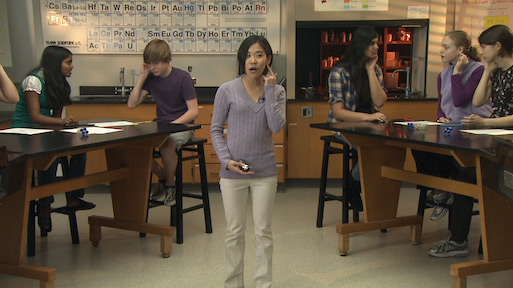Cystic Fibrosis


Cystic Fibrosis is one of the most common childhood, inherited diseases resulting in a shortened life span and a range of debilitating symptoms—including chronic lung infections, and eventual lung failure. An estimated 1 in 22 people of European decent carry a mutated copy of this gene in their genome. The cystic fibrosis module explores this disease from a genetic perspective. Students will learn a real-world example of problems that can occur when DNA is mutated, as well as how the discovery of the mutated gene means hope for those suffering with this disease. Students will also learn how the researchers, doctors, and genetic counselors have discovered the gene, treated patients, and have helped people assess their risk of passing the disease on to their children. This module includes a genetic testing simulation activity, where students determine if an individual carries the mutated gene—hopefully leading to discussions about ethical issues involved with genetic testing.
Teacher's Guide
Our DNA Makes Us Unique
Many of our traits that make us unique are inherited from our parents through our genes. Genes are located on chromosomes and we get half of our chromosomes from our mom and half from our dad. So for every gene we have two copies, one from each parent. We can either have two copies of the same gene (or allele) or 2 different alleles for a certain gene. Often if we have two different alleles for a gene, one is dominant over the other. For example, the allele for brown eyes is dominant over the allele for blue eyes. Therefore, if you have one blue eye allele and one brown eye allele you will have brown eyes because the brown eye allele is dominant. Students will participate in an activity called the Genetic Wheel that will walk them through a series of seven traits controlled by a single gene. Every student in the class will determine their unique combination of these seven traits which demonstrates how much variability exists among people when you factor in all of the different traits.
Changes in Genes lead to Changes in Protein
Changes in the DNA sequence for a gene can result in a direct change in the amino acid composition of the protein (remember DNA -> RNA -> protein), thus changing it’s shape and possibly it’s function. These changes can be due to natural variation or mutation by some external factor. Variations in genes can lead to changes in physical appearance, but in some cases can also lead to disease. Diseases that occur due to inherited genetic factors are called genetic diseases.
Cystic Fibrosis
An example of a genetic disease is Cystic Fibrosis (CF). Over 30,000 people in the United States suffer from CF. The cause is a mutation in the cystic fibrosis transmembrane conductance regulator (CFTR) gene. CFTR is a chloride ion channel involved in maintaining the proper consistency of bodily fluids such as sweat and mucus. This leads individuals with CF to have thick, dry mucus in their lungs that often becomes infected with pathogens such as the bacterium, Pseudomonas aeruginosa.
You be the Clinician!
In this module, students will analyze four patient “samples” to determine which are most likely to have CF. Students will then analyze the DNA sequence of the CFTR gene for these patients to see which possess a mutation leading to dysfunctional CFTR. This will involve the students manually transcribing the DNA sequence into RNA and then translating it into protein.
Gene Therapy
Many treatments for CF and other genetic disease involve management of the symptoms. However, gene therapy holds the promise to curing genetic disease by eliminating their cause. Scientists are working to develop methods which would deliver a functional copy of the mutated gene (such as CFTR) into cells which would replace the dysfunctional copy. Gene therapy is still in the early stages of development but represents a future cure for genetic diseases such as CF.
